2024 | Competition | Berlinale Special
A Focus on the Unusual
In 2024, the Competition and Berlinale Special offer programmes that are impressive in their formal diversity as well as presenting a broad range of themes. In this interview, Artistic Director Carlo Chatrian and Head of Programming Mark Peranson discuss the significance of emotions in the selection of both sections, the strong presence of mother and child characters and the play with genre elements.
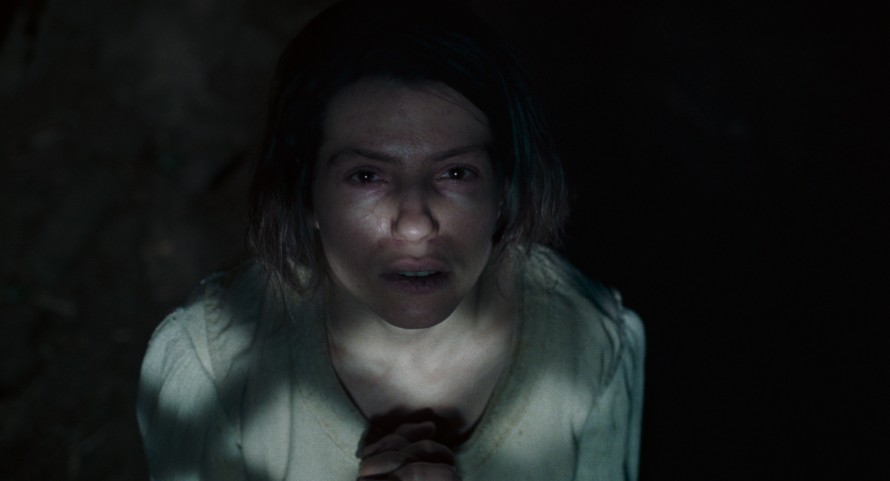
Anja Plaschg in Des Teufels Bad (The Devil’s Bath) by Veronika Franz and Severin Fiala
This year’s Competition programme seems to be an emotional rollercoaster. The films are funny, shocking, tender, scary... What role did emotion play in the selection?
CC: Emotions play a big role in the selection process. We watch films and try to understand what they want to relay to the audience, also in terms of a certain vision of the world. So the range of emotions in the programme is not a surprise. Keyke mahboobe man (My Favourite Cake) by Maryam Moghaddam and Behtash Sanaeeha is the first example that came to my mind. It's very emotional to see an old woman in Iran doing things that people, most likely, did in the past and that are now forbidden in public.
MP: There are also films like Sterben (Dying) by Matthias Glasner, which is a very emotional film traversing all various forms of the spectrum regarding family, personal relationships between men and women, or mothers and children. So I agree, there are a lot of emotional films in the selection. And of course, there are always emotional reactions when we discuss the films in the committee. Everybody's very passionate about the films. And maybe that passion is what comes through in this year’s Competition.
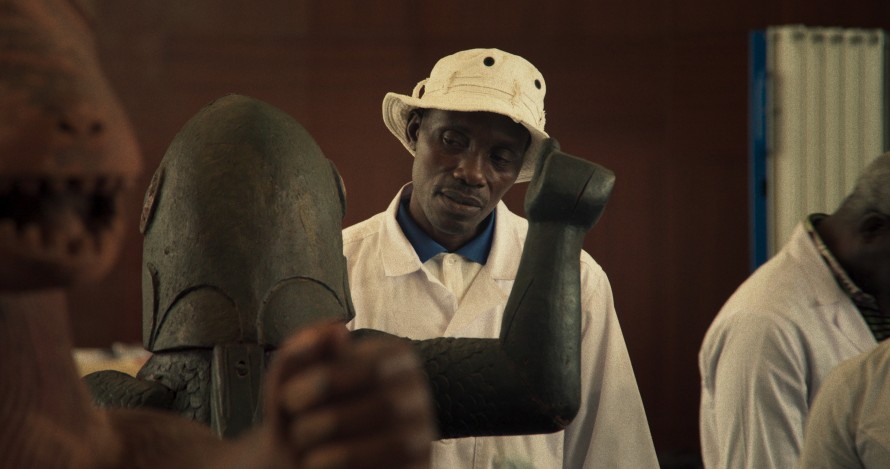
Dahomey by Mati Diop
The films don't plunge into the pressing conflicts of the time. Nevertheless, many titles talk about loss and grief. Do they form, in this respect, an emotional echo chamber for the escalations of the present?
CC: Indeed, there are a good number of titles that deal with sorrow, grief or the loss of a loved one - and in a different way also with disappearance. Dahomey is apparently not about death. But for me, it is. It is crossed by death. The film is about statues that were looted by French colonial troops in the 19th century and now are returned to Benin. You may say that a statue never dies. But the way in which Mati Diop uses the voice-over of the statue makes us feel that this voice comes from beyond. It doesn’t exist in the same time and space that we do. For me, this reverberates more than the actual depiction of death. This can also be seen in a comedy like Hors du temps (Suspended Time) by Olivier Assayas. There is this idea that when I'm no longer here, the house will be yours. Here cinema captures something that is not reflected directly, but something that is in the air. And I think that not the idea of dying, but the idea of being at the end or going towards the end of a certain era is something that filmmakers perceive very strongly.
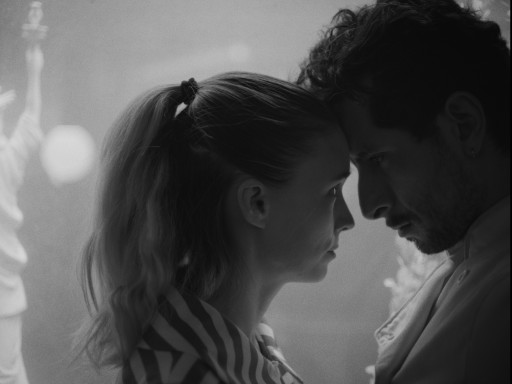
Rooney Mara and Raúl Briones Carmona in La Cocina by Alonso Ruizpalacios
MP: And there are a lot of films that deal with confinement. One obvious form of confinement appears in form of the prison in Vogter (Sons) by Gustav Möller. In Hors du temps people are confined in one space during Covid. In Dahomey, the statues - which are also people, as they have a voice in the film - have been confined in a certain place for decades. Keyke mahboobe man is basically about people who live in a daily state of confinement. Only in their private spaces they are able to express themselves. La Cocina by Alonso Ruizpalacios for the most part takes place in one kitchen. Everybody's sort of stuck and can't get out, and many of the people in this film are illegal immigrants. So they're also in this sort of confined state of not being able to exist in a state of freedom. The hippo Pepe in Nelson Carlos De Los Santos Arias' film of the same name was kidnapped and forced to live in Pablo Escobar’s zoo. Maybe you can connect some of this to certain present-day realities. But are the filmmakers making strict political statements? Some are, some maybe not. Obviously, the Iranian film is doing that, but some are just capturing the spirit of the times. But I'm sure most of them are aware of what they're doing.
Mothers and Children
It's interesting that you mentioned the idea of being at the end or going towards the end of a certain era. Because there are a lot of mother figures in the programme. Some become mothers, some already are, others decide to have an abortion. And one may see these questions around motherhood or children as a metaphor for possible futures…
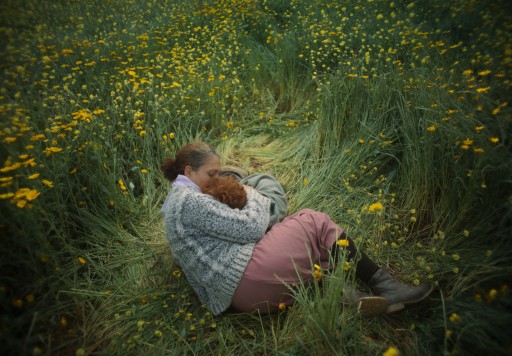
Mé el Aïn (Who Do I Belong To) by Meryam Joobeur
CC: There are many strong mother figures in the films, yes. The protagonist of Min Bahadur Bham’s Shambhala is a good example of a mother who is willing to fight. And the fact that she's carrying a child is indeed the big issue of the film. In Keyke mahboobe man the main protagonist is a mother, too. The daughter is far away, but you still have this connection between the mother and the space she inhabits. In Gloria! by Margherita Vicario the protagonist had a kid that was taken away from her and the Tunisian film Mé el Aïn (Who Do I Belong To) by Meryam Joobeur also features a mother who gave birth to three boys, of which only one comes back from war. I totally see what you mean, and it’s true, but it goes a little bit beyond what I would say. Can children be seen as a metaphor for the future? It is true that the children in most of the films are figures in danger. But this is something I wouldn't focus on because it pushes the selection in a very specific direction. We didn't select this theme consciously because we evaluate each film on its own. In the selection process you’re not able to make these kind of connections. It is one of the possible pictures that this selection is giving, for sure. The female figure and, in particular, mothers, are quite consistent in this selection.
The connection between Agnes in Des Teufels Bad (The Devil’s Bath) by Veronika Franz and Severin Fiala and the main character in Andreas Dresen's In Liebe, Eure Hilde (From Hilde, With Love) is fascinating. Agnes perishes from her unfulfilled desire to have children, while Hilde finds the strength to endure her fate in motherhood.
MP: Both characters find themselves in tragic situations, but I’m not sure if you can compare them. Because in Des Teufels Bad a woman is experiencing some sort of mental disease. And in In Liebe, Eure Hilde, there's another impetus for the trouble that Hilde goes through. It's something that's not of her own internal imbalance, but stems externally from society, which leads to the situation she's in.
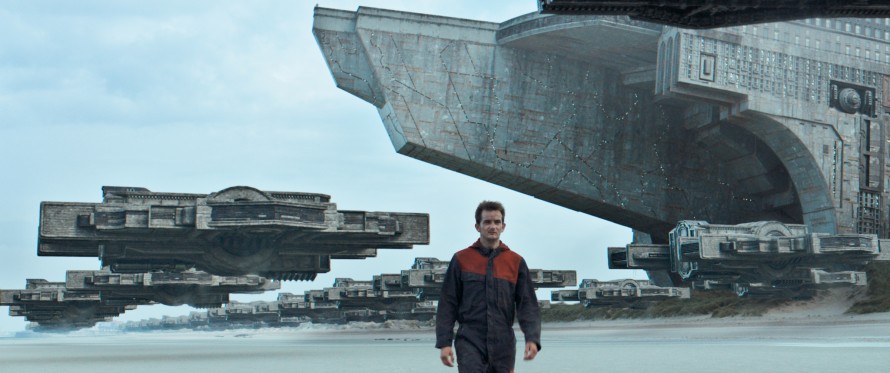
Brandon Vlieghe in L’ Empire (The Empire) by Bruno Dumont
We have discussed the female figures, what about the male characters in this year’s selection?
CC: Last year some critics and reviews identified that we featured a lot of films that dealt with toxic masculinity. This year we have very few male characters. The one example of a strong male character is the young prisoner in Vogter. But in the end, even he becomes a fragile creature. Cillian Murphy as Bill Furlong in Small Things Like These by Tim Mielants becomes a strong person late in the film. Because he knows what kind of problems will follow when he makes a decision. Only at the very end he realises that something has to be done. Talking about male strength, L’Empire (The Empire) by Bruno Dumont comes to mind. Here you have, in a very parodic way, the dark male power of the church and the state, which are exposed in a very frontal way. I'm pretty sure that some people will have issues with that. But to me, the satire element is probably the best way to expose things. And it's also kind of a style that nowadays is less and less used.
And you have this baby in L’ Empire...
CC: Well, that baby is the big mystery of the film. But with regard to L’Empire: last year we had the chance to include a lot of genre films, films that usually don't play in the Competition. This year, we tried to put in the same kind of focus on the unusual. The selection has to be compact, but at the same time we open it up with films like L’Empire, works that play with different tones. Films that are lighter, sometimes a bit provocative. Within a selection there is always the risk that if you follow the general trend in independent cinema, you may only show films that are similar in tone, although the stories may differ. It’s important to have films like Des Teufels Bad, a very dark, very political story in a style that tilts towards genre. We have several films that play with humour, that follow a more comedic way, too. In Gloria! for example, the character of the priest is performed by an Italian stand-up comedian.
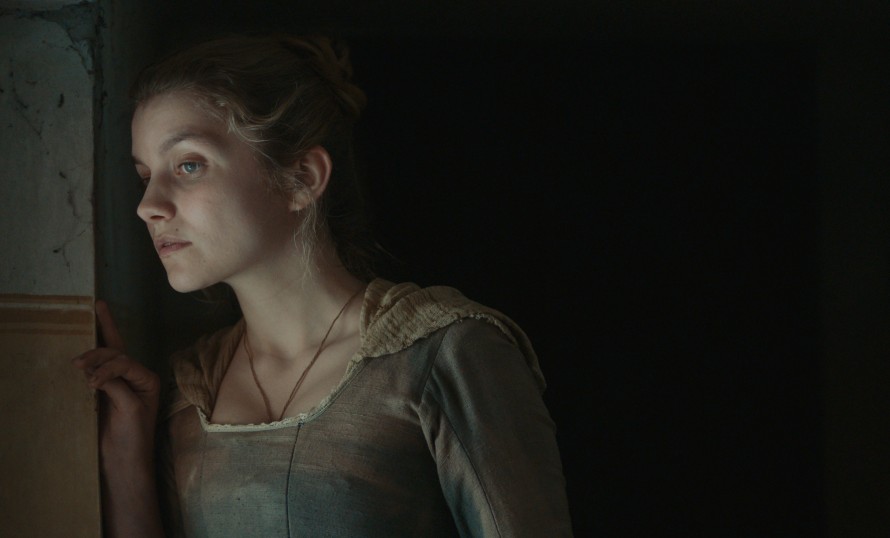
Galatéa Bellugi in Gloria! by Margherita Vicario
MP: A dark comedy, A Different Man by Aaron Schimberg also has a lot of humour in it, especially in the final act. It’s tough to balance humour with more serious themes. And I think a lot of the films in the selection do this pretty well. Even Sterben manages to find its balance, in the scenes between Ronald Zehrfeld and Lilith Stangenberg. You have to have some humour in there or it's going to be a really depressing three-hour-long film. I personally find Yeohaengjaui pilyo (A Traveler’s Needs) by Hong Sangsoo hilarious. This culture clash between Isabelle Huppert coming to Korea and pretending she's a French teacher... And Pepe is pretty funny also. That film has everything - whatever anybody wants, they can get it in Pepe.
Changing Perception
Pepe and L’Empire both play strongly with the power of cinema to challenge and change our perception of the world. Victor Kossakovsky’s Architecton also has this power. In the opening sequence, you see destroyed buildings in the Ukraine and even though you’ve seen this destruction every evening on the news, the staging gives you the feeling of really seeing this destruction for the first time.
CC: Good to hear that. Kossakovsky really puts this as one of his priorities, already in the process of conceiving the film visually. And also in terms of the sound. The same applies to Pepe, but also for Mé el Aïn. It's very visual. The first 20 minutes are extremely beautiful, but you already have the sense that something is wrong. Architecton is a very ambitious project, because the challenge of Victor Kosakovsky’s latest films is to handle topics that are universal. But, on the other hand, cinema is always very practical. You have to film a certain place, and in Architecton, probably more than in Aquarela from 2018, he really pushes the challenge towards the extreme. When he films rocks that are collapsing, it's an almost endless sequence. It's like the world in its entirety is collapsing. You no longer know which way is up and which way is down; the film creates an immersive point of view.
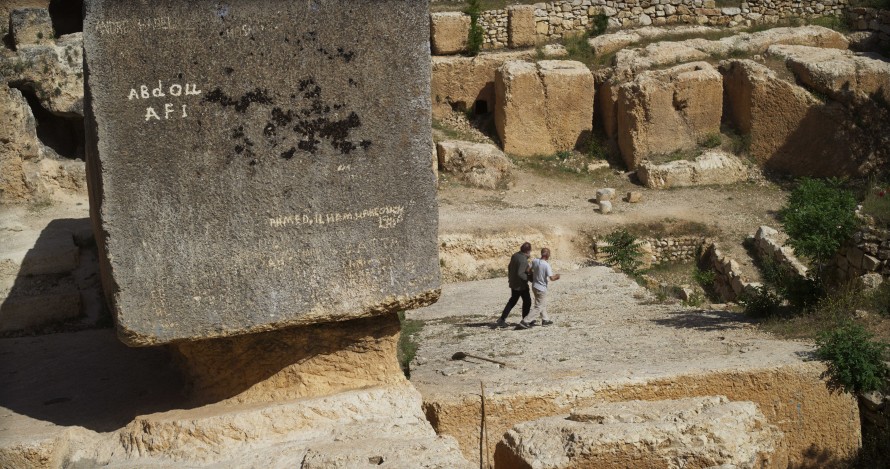
Architecton by Victor Kossakovsky
MP: With Pepe, you don't expect this kind of story in the first place. That's the starting point. It’s a film that moves from Africa to South America, changing perspectives and languages. And it changes style. The scenes are introduced from above and then it zeros into the very specific. I'm sure the idea behind the film was to not make a film like you would normally see when you go to the cinema. Dahomey also challenges concepts. It's a documentary, but there are fictional elements. You have scenes which are very strictly documentary, observing people discussing their past and present. And then you have this narration through the statues. Also, visually, the amount of colour that one sees in the film, is an intentional way of using mise-en-scène to show the vibrancy of life, which is something that many filmmakers don't pay that much attention to. The fact that she manages to do this through documentary means is pretty extraordinary.
Colonial history(ies) in the Berlinale Special
Dahomey deals with the question of colonialism. How does Das leere Grab (The Empty Grave) by Agnes Lisa Wegner and Cece Mlay, which will be shown in the Berlinale Special, approach the subject?
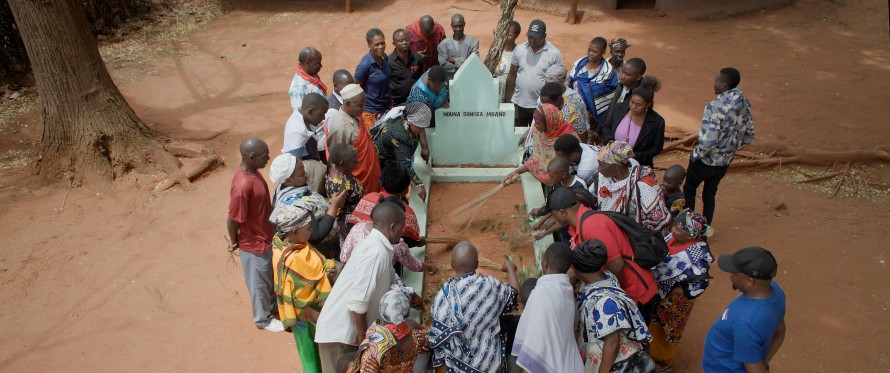
Das leere Grab (The Empty Grave) by Agnes Lisa Wegner, and Cece Mlay
CC: We have more than one film in Berlinale Special dealing with colonialism, but Das leere Grab is the most direct one. It speaks universally, but it speaks on a deeper level to Germany and Berlin-based viewers. The story starts with an amazing sequence in Tanzania, so you understand the relevance of the remains for the Tanzanian culture. And this is a very human and not politically abstract introduction to the subject. The rest of the story shows the quest for the remains, whose recovery is important to be able to grieve. This is quite universal. In Pepe the language carries an idea of colonialism. Sasquatch Sunset also comes to mind. In the world of film, English is the main language. So the idea of American filmmakers to completely dispense with the spoken word and to have the characters communicate only in a pre-language challenges the culture they live in. David & Nathan Zellner do this in a very funny way.
MP: How absurd is it that you have famous actors in Sasquatch Sunset and basically don't see them at all. In a very specific way exergue – on documenta 14 by Dimitris Athiridis touches on these topics, too. It's about the reasoning behind documenta 14 taking place in both Kassel and Athens at a time of the economic crisis in Greece. It was something which was essentially caused by Germany through the European Union. And the reason they decided to mount this exhibition in Athens was to deal with this economic colonial relationship.

Hako Otoko (The Box Man) by Gakuryu Ishii
The Art of Comedy and Genre
Hako Otoko (The Box Man) by Gakuryu Ishii seems to be “just” an absurd comedy at first glance. Or is it approaching social issues by other means?
MP: The box is not just a voyeuristic thing. It's a way of trying to withdraw from society. This is something very peculiar to Japanese culture. In the end, even when the main character is out of the box, he is trying to enclose himself in this house, physically blocking himself off from the rest of the world. This is the socio-political stance of the film.
CC: Berlinale Special has some films that play upon clichés or trends that have been relevant in film. In Hako Otoko it is the fetishistic desire to look at others without being watched. In Love Lies Bleeding by Rose Glass it’s the notion of muscle and power. Sasquatch Sunset is another good example. Hako Otoko tells in its second part, when it clearly becomes a parody, a story about the world of the 21st century in a quite strong way.
There are a few genre films and a lot of action and horror in the Berlinale Special. Are you setting the programme as a counterpoint to the sometimes less accessible films in the Competition, in which a few films are also playing with elements of genre?

Don Lee in Beom-Joe-do-si 4 (The Roundup: Punishment) by Heo Myeong-haeng
CC: Yes, there are Competition films that play with horror elements, like Des Teufels Bad or Mé el Aïn. Other titles play with comedy or parody. The films in Berlinale Special are as strong as any others, but they are also more generous and more audience friendly. And indeed, this year all these films play with genre and audience expectations. So when you start watching Cuckoo by Tilman Singer, you are made to believe you’re in a horror movie but then it becomes something more elaborate. And we could say the same thing for many other movies. Probably the most traditional or straightforward genre film is Beom-Joe-do-si 4 (The Roundup: Punishment).
MP: Yes, I was going to say that too. It's the fourth film in a franchise, which has been very successful. So if you're continuing a series, you don't make a different version of it. But still, I think for our audience there are things in there which differ from a traditional Hollywood action film. For the most part there are no guns or CGI, it's just a lot of fists and fighting. It's the debut film of Heo Myeong-haeng, an action choreographer. The action scenes are very visceral, but also comedic. We thought it would be good to have films that are more “midnighty”, with a general appeal and less “auteur”, so the focus of some of these films isn't necessarily on the filmmaker. That was something that didn't really exist in the official programme as we saw it up until last year’s edition. And it's been successful. You can show a film at 10.30 at night in a full theatre. People are there because this is the kind of film they want to see.
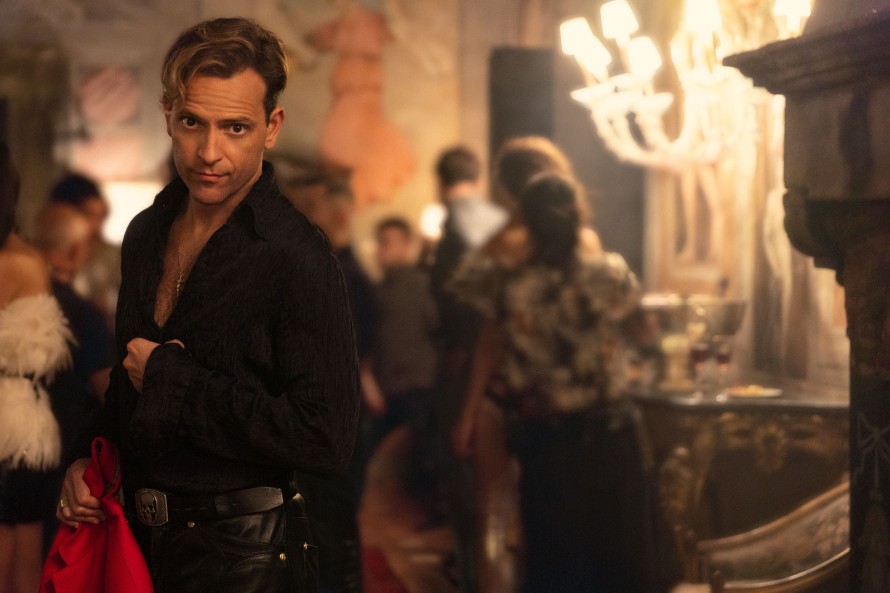
Alessandro Borghi in Supersex by Matteo Rovere, Francesco Carrozzini and Francesca Mazzoleni
Series and Stars
Last year saw the last edition of Berlinale Series. In 2024 you have two series in the Berlinale Special. What qualities do Dostoevskij (Dostoevsky) and Supersex have that convinced you to show them?
CC: We didn't have any predetermined criteria. After the end of Berlinale Series we wanted to keep serial storytelling within the frame of the festival, because it brings something different into the picture. We chose Supersex about the life of the Italian porn star Rocco Siffredi because we thought that playing with eroticism brings a colour to the programme we didn't have that much, at least not in the Competition or the Berlinale Special. We evaluated the series as they were available. In the end, we selected less than we initially wanted, but it's the result of the strength of the other titles at hand.
As impressive as last year is the star power you bring to Berlin. How much does it hurt not to have a second red carpet like the festival used to have at the Friedrichstadt-Palast?
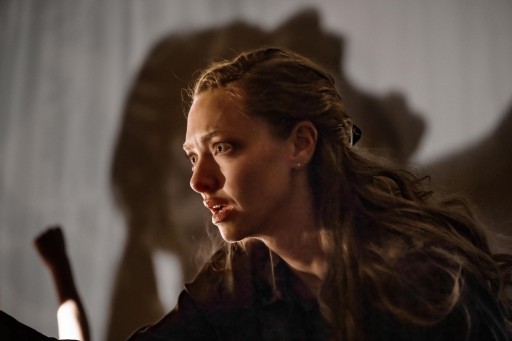
Amanda Seyfried in Seven Veils by Atom Egoyan
CC: I think for the audience having just one big red carpet is a great improvement because the fans can stay at the Berlinale Palast and will see the stars, whose films are playing elsewhere, walk the red carpet at Potsdamer Platz. I think that last year’s decision to have a number of Berlinale Special Galas at Verti Music Hall was a good and satisfactory one. We have a great new theatre that allows 2000 viewers to watch a film. This year the Special is more spread out. Along with screenings at Kino International, we have added the Zoo Palast. We are happy with the big presence of stars. Not only from the US, like Rooney Mara, Amanda Seyfried, Kristen Stewart, Adam Sandler and so on. You also have Don Lee who is a big star in Asia. Maybe not everyone knows his name, but when you see his face, you say, oh, that's the guy! And I think it's important for Berlin, to not be so narrow. Masatoshi Nagase and Tadanobu Asano, the main actors in Hako Otoko, are stars in Japan.
MP: And, of course, Isabelle Huppert is one of the biggest French stars and she’s playing in two films this year: Yeohaengjaui pilyo in the Competition and Les gens d'à côté (My New Friends) by André Téchiné in Panorama. The last time we saw her, she was on a screen in the Berlinale Palast, as she was supposed to come to accept her Honorary Golden Bear, but couldn’t come because she had Covid.